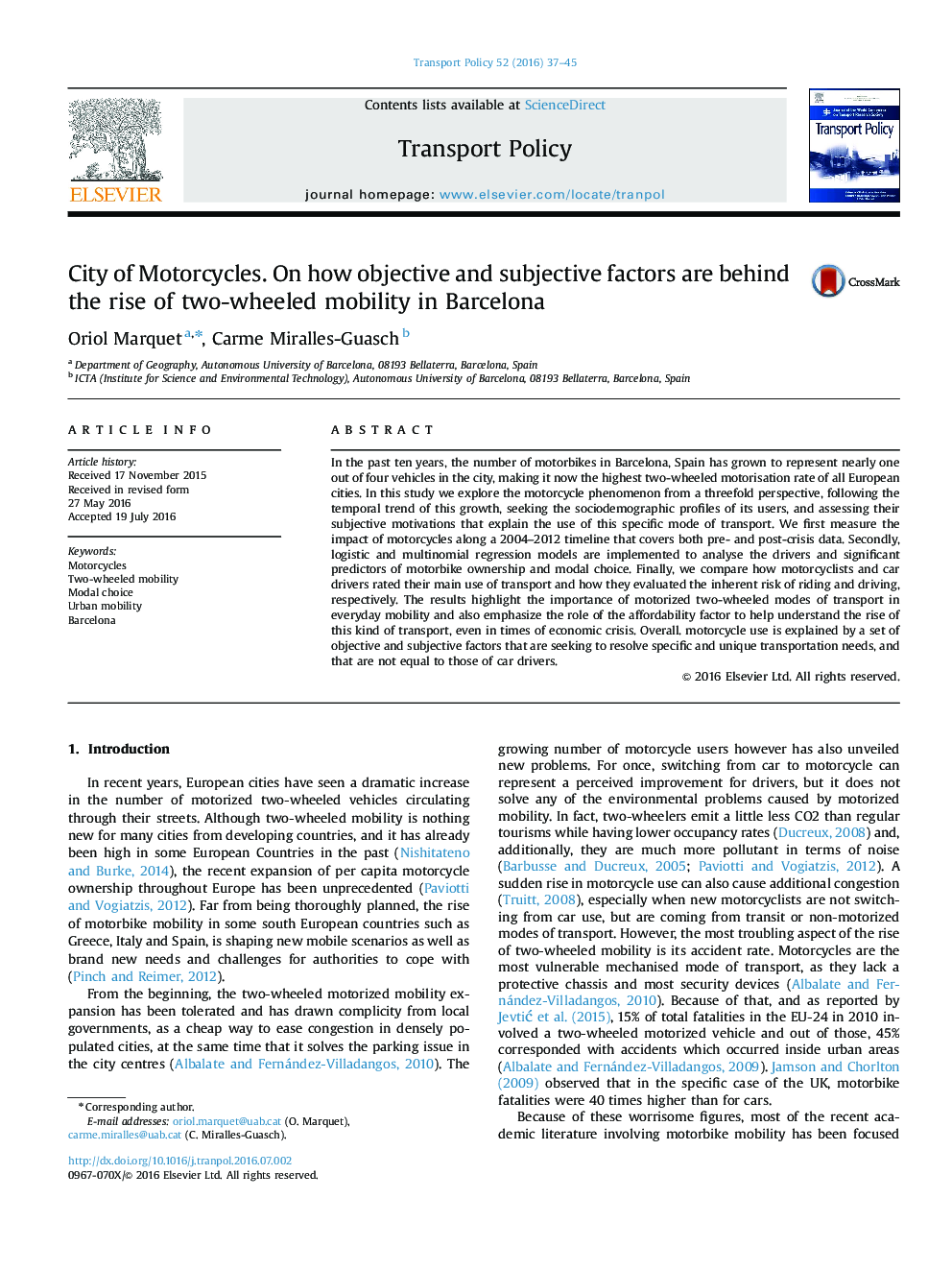| Article ID | Journal | Published Year | Pages | File Type |
|---|---|---|---|---|
| 7497391 | Transport Policy | 2016 | 9 Pages |
Abstract
In the past ten years, the number of motorbikes in Barcelona, Spain has grown to represent nearly one out of four vehicles in the city, making it now the highest two-wheeled motorisation rate of all European cities. In this study we explore the motorcycle phenomenon from a threefold perspective, following the temporal trend of this growth, seeking the sociodemographic profiles of its users, and assessing their subjective motivations that explain the use of this specific mode of transport. We first measure the impact of motorcycles along a 2004-2012 timeline that covers both pre- and post-crisis data. Secondly, logistic and multinomial regression models are implemented to analyse the drivers and significant predictors of motorbike ownership and modal choice. Finally, we compare how motorcyclists and car drivers rated their main use of transport and how they evaluated the inherent risk of riding and driving, respectively. The results highlight the importance of motorized two-wheeled modes of transport in everyday mobility and also emphasize the role of the affordability factor to help understand the rise of this kind of transport, even in times of economic crisis. Overall. motorcycle use is explained by a set of objective and subjective factors that are seeking to resolve specific and unique transportation needs, and that are not equal to those of car drivers.
Related Topics
Social Sciences and Humanities
Social Sciences
Geography, Planning and Development
Authors
Oriol Marquet, Carme Miralles-Guasch,
